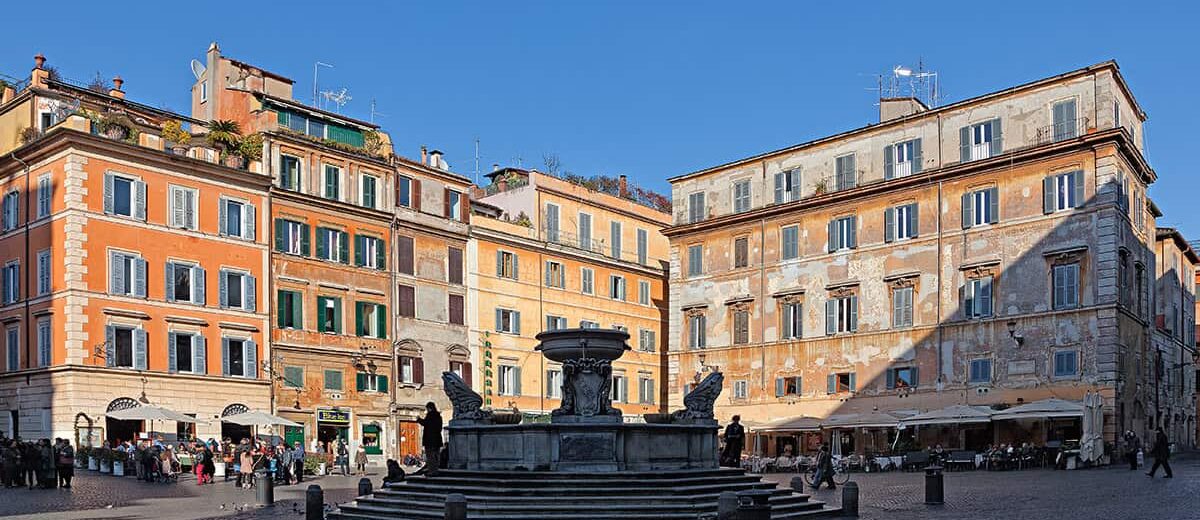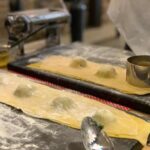
Neighborhoods in Rome
A guide to different neighborhoods in Rome
Rome was founded around 752 b.c. There are few other places in the world where you can admire 2700 years of history and culture in such a concentrated area. On almost every corner of the city center has something different and beautiful throughout each of its neighbourhoods. Below is a short overview of the most important neighbourhoods.
Termini
The main train station Termini, locted next to Piazza della Repubblica, is most likely going to be your introduction to Rome. It is not an pretty area, but there are a lot of affordable accommodation options and it is a convenient location, near the transportation hub of the city. There are things to see here, including the Basilica di Santa Maria Maggiore and the Baths of Diocletian. Be careful around this area druing the night.
Monti
In ancient times, this area was home to gladiators and even Julius Caesar. These days, it is a gorgeous little neighborhood filled with cobblestoned streets, and a fantastic mix of traditional restaurants and shops. An Ideal place to stay, only 5 minutes walk to the Colosseum.
Ancient Rome
Many visitors explore this area at the start of thier stay in Rome, taking in the Colosseum, Roman Forum Palatine Hill and Circus Maximus. The area forms part of the historic district, as well as Campo de’ Fiori, Piazza Navona, and the Pantheon. Filled With ancient streets, beautiful piazzas and central location, this is a fantastic place to stay, avoiding the need of public transportation.
Vatican City
The neighborhood around the Vatican City is called Prati, a pretty, safe residential area. It is quite at peaceful during the night and contains many of Rome’s finest restaurants. The area is popular for sightseeing and foodies, with the largest and oldest food maket in the city located here. The area also offers good shopping streets less expensive than those found on Via del Corso and in central Rome.
Trastevere
One of the most charming areas of Rome located south of the Vatican, is a favourite setting for walking around and getting lost. Day and night this vibrantly pretty district with its ivy-coated buildings and little cobberly streets is lovely area to stay and experience a true Roman neighborhood.
A popular and pretty gathering place is the Santa Maria square. Dating back to the 3rd century, the church of Santa Maria is one of the oldest in the city. There are 80 other churches named after this one in Rome. The square is a lovely to sit and people watch. A popular local aperativo bar is Freni e Frizione located near pizza Trilussa on Via del Politeama, 4.
The Jewish Ghetto
In 1556, Pope Paul IV ordered around 8,000 Jews, to move into this area, located in between the Tiber Island and Trastevere. It is filled with kosher restuarants and butchers. The Tempio Maggiore is Rome’s main synagogue as well as a museum dedicated to the history of the Roman jewish community.
Testaccio & The Aventine
Once home to the slaughterhouses of Rome. A working-class neighborhood with plently of traditional Roman cuisine options, satisfying local tastes. Many Nightclubs are based here, making it now a popular place for nightlife.
Historical center
The historical center was the core of renaissance and baroque Rome. Its architecture owes much to the 17th-century architect Gian Lorenzo Bernini, who designed the famous Fountain of the Four Rivers on Piazza Navona. This is one of the most desirable areas of Rome, a maze of narrow streets dating back to the Middle Ages. There are many churches built during the Renaissance and baroque eras, made with rare marble and other materials stripped from ancient Rome. The heart is Piazza Navona is bustling with restaurants, cafes, shops and bars.
The Tridente (Piazza di Polopo, Spanish steps)
The district’s name comes from a white three-pronged lance from piazza del Popolo, Via di Ripetta, Via del Babuino and Via del Corso. Piazza del Popolo & the Spanish Steps are two of Rome’s largest squares. The square’s major church is Santa Maria del Popolo one of the best examples of a Renaissance church in Rome. The Spanish Steps is a popular meeting place for visitors, to people-watch with a gelato. Some of Rome’s most upscale shops are located here.
San Lorenzo
This is a fun student neighbourhood, filled with lots of cheap bars and local resaurants. In the main square on Via dei Volsci is a daily market. There is the beautiful basilica, San Lorenzo Fuori le Mura situated in Piazzale San Lorenzo. One of Rome’s loveliest churches and it receives few visitors. To escape the tourists and see and different side to Rome take a trip to San Lorenzo.
EUR palasport
Located on the outskirts of the city. A beautiful upmarket residential area, offering good shopping, and a lovely lake and park. A great place to get away from the city. A famous cafe for locals of EUR, “La Palombini Eur”, has a long tradition of home-made ice-creams and desserts. EUR is the most important commercial and business district of Rome, offering a good social and nightlife scene. There is a huge basilica called basilica of Santi Pietro e Paolo located on a hill with many steps preceding the main entrance.



